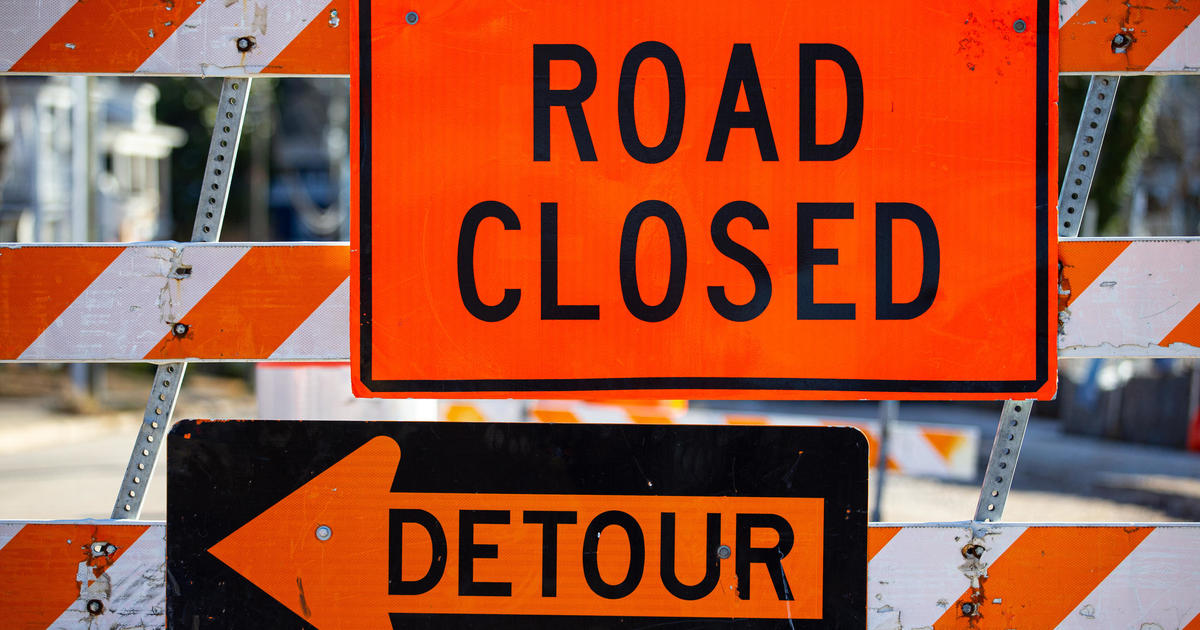High Levels Push Canal Water Into Homes Near Detroit River
DETROIT (CBS DETROIT/AP) — Residents living near the canals on Detroit's Eastside have been dealing with flooded homes and streets since April due to heavy rainfall.

Michelle Davis pulls on knee-high rubber wading boots each time she leaves and returns to her flooded home on Detroit's eastside, the result of an overflowing canal that abuts several homes and feeds into the swollen Detroit River nearby.
Despite the sun-splashed and rainless day, one thing was clear Tuesday as Davis slowly made her way through the flooded street in front of her home: Water was winning. For weeks, it's gushed over and through cracks and gaps in canal seawalls, poured through backyards, and spilled down driveways into streets now overtaken with water.

This not the Heartland, where dealing with spring flooding and its aftermath, is common. This is Detroit, where by summer local children are more accustomed to playing on dry street pavement, rather than wading through water that stands ankle-to knee-deep. But water levels throughout the Great Lakes basin due to winter snow melt and heavy spring rain have dampened the spirit of some residents who worry that their property and belongings will be ruined by the encroaching water.
On Tuesday, torrents of canal water gushed into already overwhelmed storm water drains. Sandbags stacked days ago to divert water from foundations and out of basements are submerged.

"The city says there's nothing they can do. The drainage is at capacity," said Davis, 57, who has battled water in the basement of her rented house off and on since June 29.
"Most people can't afford flood insurance," she added. "If they make a claim, their insurance will go up."
Detroit is not the only big city in the basin concerned about flooding. In late April, crews in a suburb of Rochester, New York, started filling sandbags in case of flooding due to high water levels on Lake Ontario.
Gus Kartsonas has lived in his eastside Detroit neighborhood since 1977. He's never seen flooding like this over such a long period of time. Streets flooded during the mid-1980s, but the water "was gone in a few days," said Kartsonas, 87.
Three months of abnormally wet weather this spring have kept stream flows into the Great Lakes well above average, according to the U.S. Army Corps of Engineers.
National Weather Service records show rainfall over areas that feed into Lakes Michigan, Huron and St. Clair was up to 4 inches above normal in April.
Water levels in Lakes Erie and Ontario are the highest ever recorded. Lake St. Clair which feeds into the Detroit River also set a new high-water mark. Lake St. Clair's water level was forecast to increase by four inches over last month's level. The lake's outflow through the Detroit River is forecast to be above average this month.
In early May, about 3.6 inches of rain fell over a few hours in the Detroit area. Sandbags were stacked in the neighborhood around the canals. Some people living northeast of Detroit along Lake St. Clair were forced to put down sandbags to hold off floodwaters.
The excess water is overtaxing Detroit's underground storm water pumping system and the city's water treatment operations.
"A billion gallons of water a day is going through the system which is working like it's supposed to," Detroit Chief Operating Officer Hakim Berry told The Associated Press Wednesday. "The system is constantly going."
Still, water is so high in some spots that motorists drive slowly to avoid flooding out their engines. Even sawhorse-style street barricades placed by city crews now stand as lonely wooden islands between stretches of river water.
Just over 300 homes line the canals and nearby Fox Creek along about a six-block area several miles northeast of downtown. Berry said about 77,000 bags of sand were used to build walls in May when the waters started rising above seawalls.
"The lakes continue to rise," Berry said. "The easterly wind and rain has been causing surges. What you see right now is water that has risen above where we put sandbags."
An emergency order was issued Wednesday allowing city crews to stack sandbags on private property. Homeowners caught removing the bags can be fined and even jailed. The new round of sandbagging is designed to reinforce the breaches.
It's too late for Robin Gamble who said she was forced to move out of her rented home after water spilling from a canal began rushing through a hole in the house's aging and compromised foundation. The basement floor — and water heater pilot light — are covered. She has no hot water and says the smell is unbearable and unhealthy.
"I'm couch jumping right now," said Gamble, 43. "I can find a place to stay, but I can't get my stuff."
The neighborhood is a paradise for boating enthusiasts. Homes are decades old and many with direct access to the water have docks or boathouses.
Wood docks behind Kartsonas' home are about 1 foot underwater. Rivulets of water seep through holes in a seawall, skirt past his front yard and into a drain in the street.
"It's above normal," he said of the canal water. "Now, it's starting to come in the basement a little bit."
A few blocks away, John Wrinkle is putting in a new seawall behind a house he owns along Fox Creek. The creek water is several feet deep in an adjacent yard. On the other side of his home the water is pouring past his garage and into already flooded Ashland Street.
"It's getting pretty close now," said Wrinkle, 55. "I'm starting to get worried."
© 2019 CBS Broadcasting Inc. All Rights Reserved. This material may not be published, broadcast, rewritten, or redistributed. The Associated Press contributed to this story.



